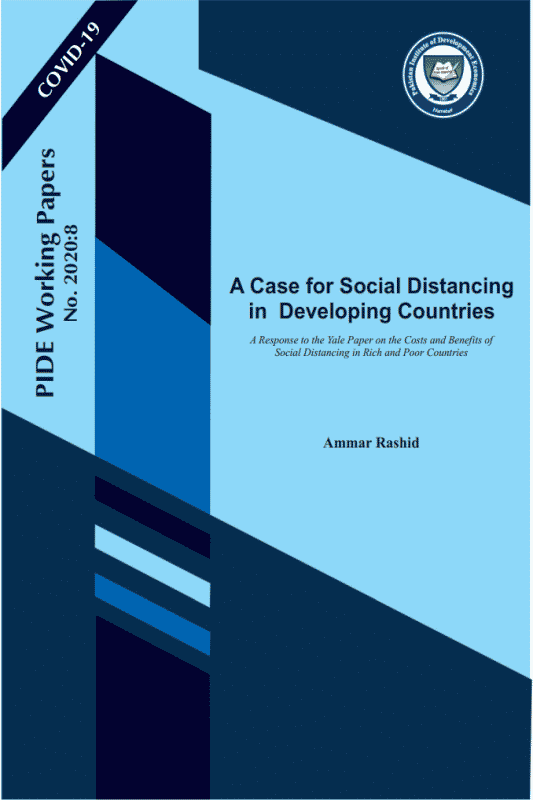
Pakistan Institute of Development Economics
- Home
Our Portals
MenuMenuMenuMenuMenuMenuMenu - ResearchMenuMenuMenuMenuMenuMenuMenu
- Discourse
- The PDR
- Our Researchers
- Academics
- Degree Verification
- Thesis Portal
- Our Portals
A Case for Social Distancing in Developing Countries
The following paper is a response to the paper ‘The Benefits and Costs of Social Distancing in Rich and Poor Countries’ by Zachary Barnett-Howell and Mushfiq Mobarak (April 2020)1 of Yale, who use a Value of Statistical Lives (VSL) analysis to argue that the epidemiological and economic benefits of saving lives via social distancing in the context of the COVID-19 pandemic are ‘much smaller in poorer countries’ than in rich countries. This paper argues that Barnet-Howell and Mobarak’s paper does not amount to a credible cost-benefit analysis of social distancing in the present context as: (a) It mischaracterizes the goal of social distancing as a permanent imposition until a vaccine is developed rather than an epidemiological measure aiming to bring the reproduction number below 1 ; (b) It underestimates the mortality risks in developing countries owing to a lack of consideration of lower healthcare capacity, greater incidence of existing infectious diseases, higher levels of air pollution and multi-generational households; (c) It relies on flawed methodology that calculates the value of statistical lives for developing countries in the context of a pandemic from a past, unrepresentative sample of studies consisting of valuations of willingness to pay (WTP) to reduce linear workplace risk – rather than non-linear infectious disease risk – in developed countries; (d) It uses questionable assumptions of an absence or impossibility of any government intervention that could reduce the risk-income trade-off for workers from low-income countries; (e) It fails to assess the costs of potential COVID- 19 contagion including the long-term damage to public health, health worker mortality, and supply chains and food production disruption, among others, critical to conduct an objective cost-benefit analysis on the merits of social distancing.



